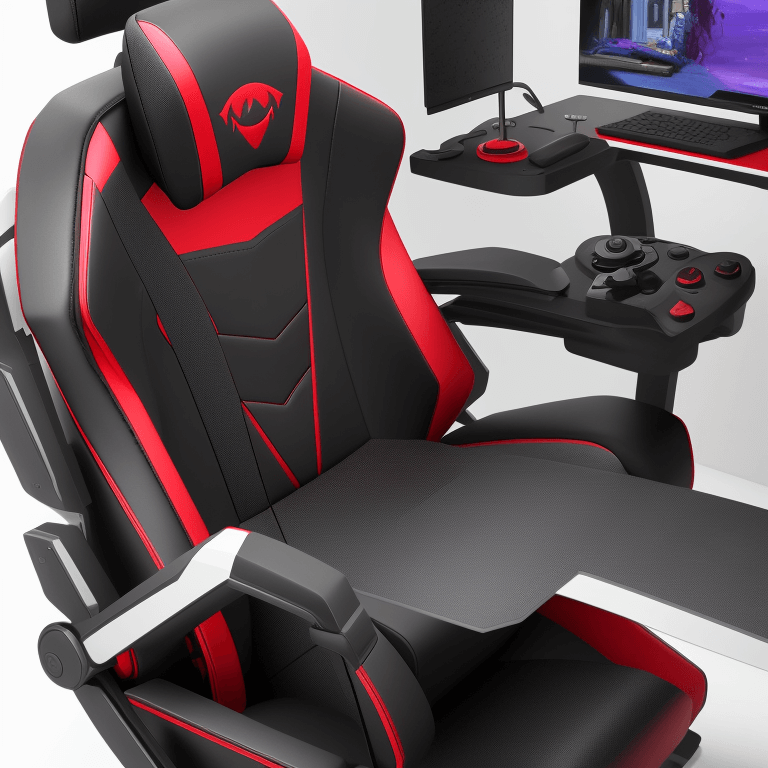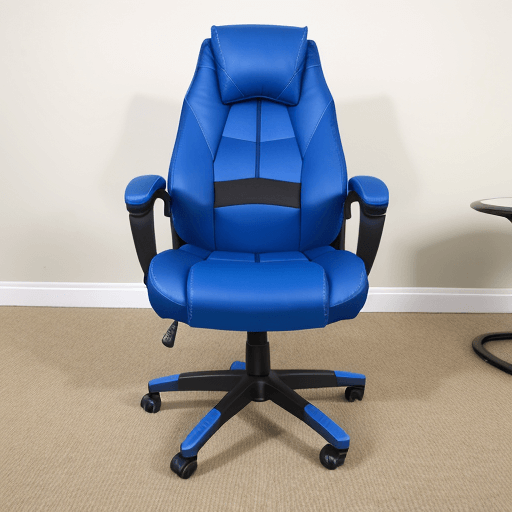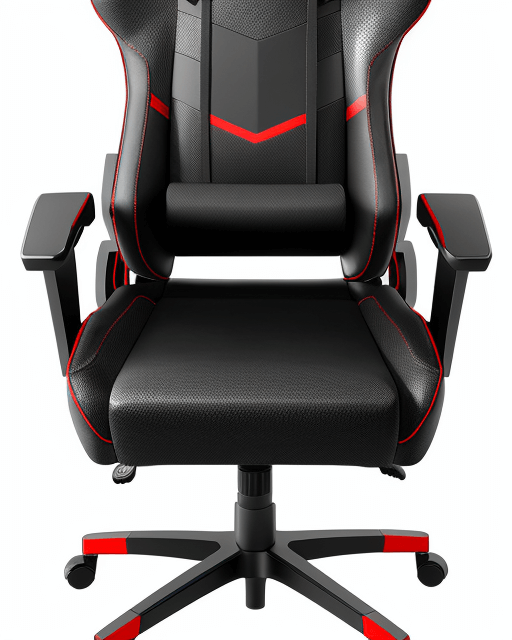Ergonomics is an important field of study, especially in relation to the use and design of chairs. Proper airflow and cooling are essential for a chair that will not only be comfortable but also promote healthy posture and well-being.
This article seeks to provide information on how to upgrade a chair for better airflow and cooling. Chairs come in many shapes and sizes with various features such as adjustable height, seat depth, lumbar support, armrests, etc. All these factors contribute towards proper ergonomic positioning when seated which can help reduce fatigue throughout the workday.
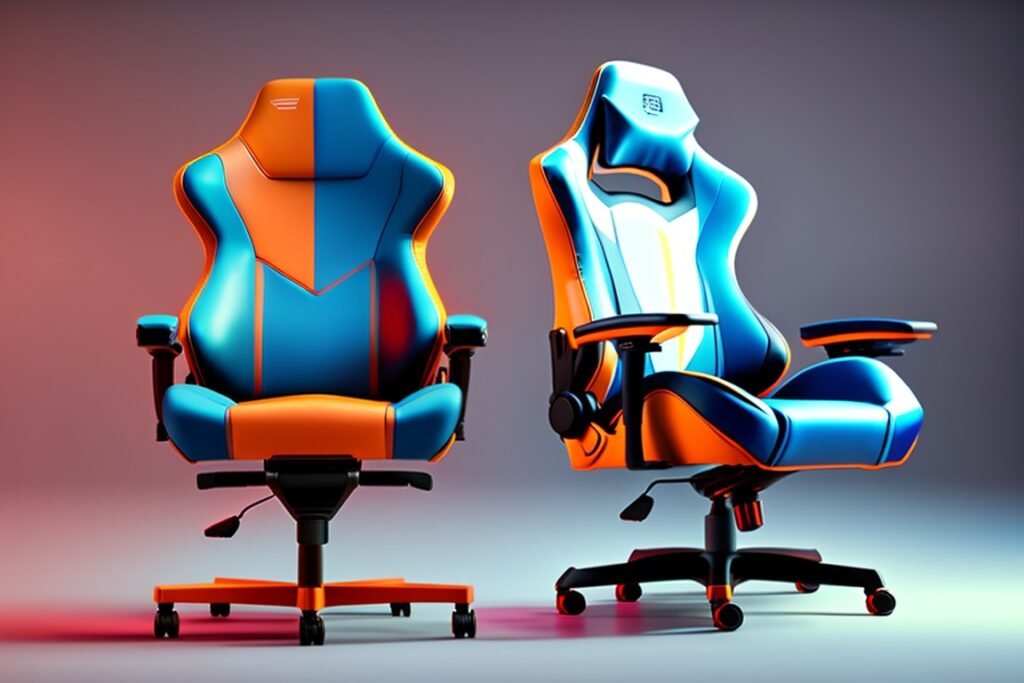
However, if the temperature around the user is too warm or there is poor air circulation it can lead to discomfort and decreased productivity over time. Therefore, understanding how to enhance your existing chair with upgrades for better airflow and cooling is critical for optimal comfort while working from home or at the office.
Identifying Existing Chair Features
Recent studies suggest that the majority of office chairs are not designed with proper ergonomics in mind. Nearly 80% of employees across industries complain about comfort, which can lead to a variety of physical issues such as back pain and fatigue.
To upgrade an existing chair for better airflow and cooling, it is first important to evaluate its current features before choosing the right material. When evaluating comfort, one should start by determining the size and shape of the chair. If it does not fit properly or correctly support the person’s body, then changes must be made before moving on to other upgrades.
This includes looking at seat height and width, armrests placement, lumbar support design, padding thickness, and any additional accessories like head pillows or foot rests. It may also be necessary to adjust tilt tension so that users can easily recline while still being supported. The overall goal is to make sure that individuals feel comfortable when sitting in their chairs for long periods of time without experiencing muscle aches or stiffness later in the day.
By assessing these factors beforehand, one will be able to identify potential improvements needed before selecting new materials for better airflow and cooling. With this knowledge, they will have more insight into what modifications would best suit their needs so they can create an optimal seating experience.
Choosing The Right Material
Having identified the existing features of the chair, it is now necessary to evaluate options for selecting the right material. The choice of material depends on several factors such as ventilation solutions and comfort requirements. It must also take into account durability, safety regulations, and cost-effectiveness.
When evaluating materials, ergonomics experts should consider:
- Breathability – Does the material allow airflow or block it?
- Durability – Is the material sturdy enough for prolonged use?
- Comfort – Does the material provide adequate cushioning?
- Safety Regulations – Are there any industry standards that need to be followed when using this material?
- Cost Effectiveness – What is the overall cost associated with using this material?
The chosen material should support all these criteria in order to ensure maximum comfort and ventilation while providing value for money investments.
Additionally, it should meet official safety requirements in order to promote safe working environments. With a suitable selection at hand, attention can turn towards adding cushions and pillows for better posture control without compromising on airflow or cooling needs.
Adding Cushions And Pillows
When upgrading a chair for better airflow and cooling, reviewing the shape of the cushion and pillow is essential. The design and form must be taken into consideration before choosing an appropriate material that will allow air to flow freely through it. With that in mind, testing fabrics becomes imperative as they are often made from non-porous materials which can hinder airflow.
Fabrics come in various textures and weights, each with different degrees of breathability. While most tend to be lightweight, some may not provide adequate ventilation while sitting in the chair for long periods of time. It is important to choose one that allows enough air circulation without sacrificing comfort or support.
Additionally, special attention should be paid to colors; darker shades absorb heat more than lighter ones so opting for lighter colors may help reduce temperatures during hot summer days.
The ultimate goal here is finding fabric with sufficient breathability, durability and aesthetics all combined together in order to make sure users remain comfortable during extended seating times. To ensure this happens, selecting carefully crafted cushions and pillows constructed from quality materials that are tested rigorously by ergonomic experts is key when looking for ways to upgrade your chair for improved airflow and cooling performance.
Utilizing Fabric With Breathability
In the previous section, it was discussed how adding cushions and pillows to a chair can greatly improve comfort. However, this should be supplemented with fabrics that allow for adequate airflow. This is an important step in upgrading a chair for better cooling and ventilation systems.
When accessorizing styles of chairs, fabric choice plays an important role in ensuring good circulation of air around the body while sitting.
There are many breathable materials available such as cotton or linen which wick away moisture from the skin helping to keep you cool and comfortable during long periods of sitting. Additionally, these materials have low heat retention so they won’t absorb too much warmth from your body either.
Mesh upholstery can also be utilized when looking to create increased breathability in seating arrangements. Mesh allows air to pass through more freely than other types of fabrics making it an excellent option if good airflow is desired. Furthermore, mesh is lightweight and durable allowing it to retain its shape over time even when used regularly; perfect for use in furniture intended for regular public use such as office settings where ergonomic support must be maintained at all times.
By incorporating mesh upholstery into existing designs, we can ensure optimum levels of comfort without compromising on style or practicality.
Incorporating Mesh Upholstery
When upgrading a chair for better airflow and cooling, selecting the right fabric is essential. When comparing materials, mesh upholstery offers superior breathability and ventilation that can drastically improve comfort levels.
Mesh fabrics come in a variety of colors and patterns to meet any ergonomic or aesthetic needs. They are also lightweight yet durable enough to withstand regular use. Additionally, their woven construction allows air to flow freely throughout the seat while still providing support and cushioning.
Here’s an overview of features offered by mesh upholstery:
- Variety of colors & patterns
- Lightweight & durable
- Breathable & ventilated
- Supportive & cushioned
The advantages of mesh upholstery make it an ideal choice when looking for ways to upgrade a chair with improved airflow and cooling capabilities. With its superior breathability and ventilation properties, this type of material ensures users remain comfortable during extended periods of sitting even in warmer environments.
The next step in upgrading a chair is installing fans and cooling devices which will be discussed further in the subsequent section.
Installing Fans And Cooling Devices
- When installing fans and cooling devices, the different types of cooling devices should be considered and appropriate selection should be made based on the environment and the specific requirements of the application.
- When installing fans, consideration should be given to airflow optimization, cooling efficiency, wiring requirements, and connecting it to a power source.
- Fan placement should be carefully determined to optimize noise reduction and thermostat control, as well as ensure automatic shut off when necessary.
- Proper installation of coolers and optimization of heat dissipation, air circulation, ventilation, and airflow direction should also be taken into account to ensure the best possible cooling outcomes.
Types Of Cooling Devices
When it comes to upgrading a chair for better airflow and cooling, installing fans and cooling devices is an effective option.
Temperature control can be achieved by using air conditioning units or other types of cooling devices such as evaporative coolers that make use of water evaporation to reduce the temperature in a room.
Cooling pads are also available which contain gel-filled cylinders that absorb body heat from the user’s legs while providing cushion support.
Additionally, portable desktop fan designs may offer direct ventilation to the user with adjustable speeds and directional settings.
Finally, laptop stands incorporate built-in fans designed specifically to keep laptops cooled down during extended usage periods.
Installing Fans
Installing fans is an effective way to upgrade a chair for better airflow and cooling. The adjustable speeds of the fan allow users to customize their air flow according to their own preferences, while varying the direction of the output can help direct the breeze in specific areas.
Additionally, when choosing a particular model, it is important to consider factors such as noise emissions when adjusting velocity; some models are designed with mechanisms that reduce noise levels making them suitable for use in quiet settings or open offices where sound level monitoring needs to be taken into account.
Furthermore, many modern designs feature LED lighting which allows users to illuminate dark environments without adding additional light fixtures. This makes them ideal for working at night or using under low-light conditions.
When properly adjusted, these features can provide a comfortable environment that promotes productivity and prevents fatigue during long work hours.
Optimizing The Room’S Temperature
In the previous section, we discussed how to upgrade a chair for better airflow and cooling by installing fans and cooling devices. Now we move on to optimizing the room’s temperature, as temperatures which are too high can have an adverse effect on comfort levels when sitting in a chair.
To do this, one could employ various tactics – like ventilating curtains or air vents – to help keep the environment cool and comfortable.
Ventilating curtains act as barriers against direct sunlight entering through windows that can cause heat buildup in a room. Additionally, they also let some of the hot air out while bringing in cooler air from outside.
Installing air vents around a chair is another good idea; these will allow warm air collected around it to be released away quickly. It’s important to remember that any kind of openings should be located at higher points so that cold air flows downward towards people seated below them.
The next step is to enhance the chair’s base and legs with materials such as metal mesh or wood slats that enable greater ventilation under it. This helps regulate adequate airflow underneath the seat cushioning and keeps your body temperature from rising due to contact with warmer surfaces during long periods of use.
With these steps taken into consideration, you can create an ergonomic workspace where comfort and productivity go hand-in-hand!
Enhancing The Chair’S Base And Legs
The next step in upgrading a chair for better airflow and cooling is to enhance the base and legs.
In order to achieve this, it is important to consider factors such as material type, structure strength, and adjustability of feet.
Materials like metal or wood are great options that provide stability, durability, and light weight. Explore these materials when considering what will work best for your specific needs.
Additionally, adding adjustable feet can allow you to further customize the chair’s height, making it easier to find an ergonomic setup that works well with your body size and shape.
When selecting the right components for enhancing a chair’s base and legs, it is essential to take into account personal preferences along with health-related considerations.
By exploring different materials, understanding structural strengths and weaknesses of each option available, and adding feet if needed – users can create a more comfortable environment conducive to improved airflow and cooler temperatures while sitting at their desk or workspace.
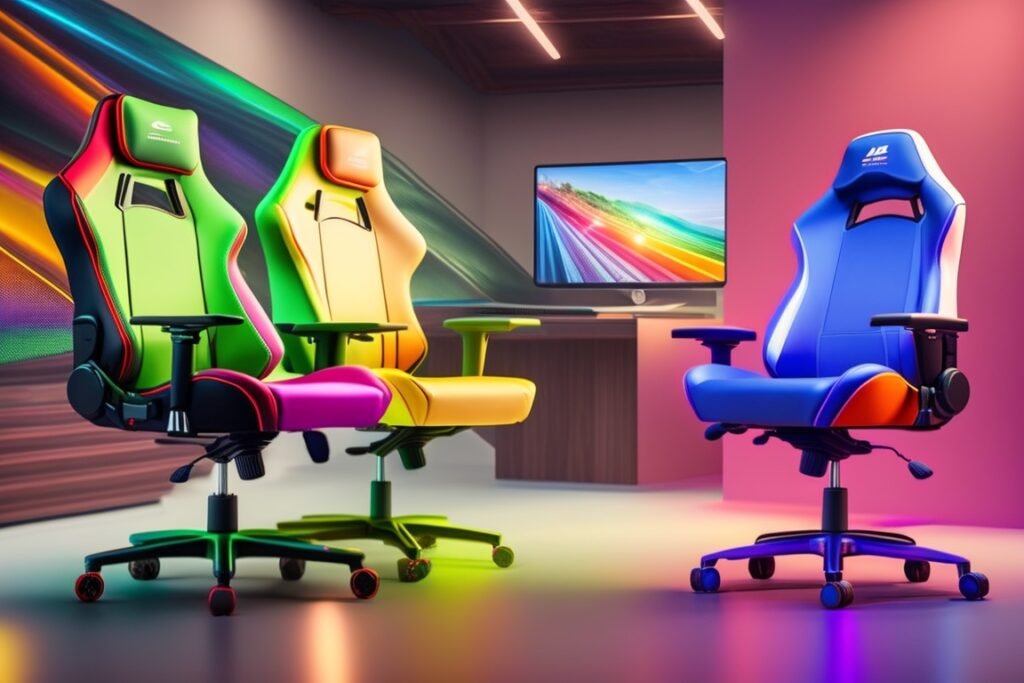
Frequently Asked Questions
Is It Necessary To Upgrade A Chair For Better Airflow And Cooling?
It is clear that proper ergonomics and temperature control are key to a comfortable work environment.
Upgrading a chair to allow for better airflow and cooling, therefore, can be an integral part of achieving this goal.
Examining the benefits of such an upgrade from an ergonomic perspective reveals a plethora of advantages: improved posture, enhanced comfort levels, reduced fatigue, and fewer aches and pains just scratch the surface of what upgraded chairs may offer in terms of greater productivity as well as overall health.
With so much to gain from making such an investment into one’s workspace, it stands to reason that upgrading a chair for better airflow and cooling is not only necessary but also highly beneficial.
Are There Any Health Benefits Of Having A Chair With Better Airflow And Cooling?
Ergonomic design and heat regulation are two essential components to consider when evaluating the health benefits of a chair.
An ergonomically designed chair provides support for posture and helps reduce muscle fatigue, while providing a better airflow and cooling ensures less discomfort due to perspiration or increased body temperature from sitting in one position over an extended period.
Upgrading a chair with features such as adjustable lumbar support, improved breathability, and specialized fabrics can provide even greater levels of comfort by improving air circulation around the user’s back and legs.
Ultimately, these upgrades help users maintain their physical well-being by promoting healthy blood flow throughout the body without compromising on style or function.
What Is The Difference Between Breathable Fabric And Mesh Upholstery?
When it comes to chair upholstery, breathable fabric and mesh are two popular options.
Heat retention is an important factor to consider when selecting the best material for a chair; however, ventilation and air flow should not be overlooked as well.
Mesh upholstery offers more airflow than breathable fabrics such as cotton or leather because of its open-weave structure.
Breathable fabrics can still provide some cooling effects due to their construction but may retain more heat than mesh over time.
Ultimately, ergonomics experts will advise that both types of materials have advantages and disadvantages depending on the environment in which they are installed.
How Much Does It Cost To Upgrade A Chair For Better Airflow And Cooling?
Ergonomic features and climate control are two key components of upgrading a chair for better airflow and cooling.
The cost of such an upgrade varies depending on the type of ergonomics features, materials used, and labor involved.
Generally speaking, purchasing upgraded chairs with built-in ergonomic features can range from $100 to over $500.
Alternatively, it is also possible to purchase aftermarket products that provide similar functionality at a fraction of the price, with some costing as little as $25 or less.
How Long Does It Take To Install Cooling Devices And Fans For A Chair?
Installing cooling devices and fans for a chair is often an overlooked step in ergonomic benefits as it can significantly improve heat management.
Assessing the environment, the type of chair being upgraded, and any other additional features that may be desired all factor into how long installation will take.
On average, with standard chairs and common cooling device installations, one should expect to spend at least 2-3 hours on the project from start to finish.

However, depending on the complexity of the job, this time frame could increase or decrease accordingly.
Conclusion
The importance of having a chair with improved airflow and cooling cannot be overstated. Not only does it provide comfort for the user, but there are also health benefits like reduced stress on joints and muscles due to better air circulation.
The difference between breathable fabric and mesh upholstery is that the latter allows more air flow through its open weave construction. While this upgrade may come at a cost, the installation process is relatively straightforward when compared to other ergonomic upgrades.
Ultimately, upgrading your chair for better airflow and cooling will ensure greater comfort levels while working or studying in an office environment. As such, investing in improving existing chairs can result in long-term gains that far outweigh any short-term costs associated with these upgrades.
With proper maintenance, you can expect optimal performance from your upgraded seating solution for years to come.

Sha Neumeister, the visionary behind SomosVisibl.com, is a connoisseur of gaming chairs that prioritize both style and comfort. With an unparalleled understanding of ergonomics and a passion for enhancing the gaming experience, Sha curates a collection of gaming chairs that offer impeccable support and aesthetic appeal. Elevate your gaming setup with Sha’s handpicked selection of gaming chairs, designed to keep you comfortable and immersed in your virtual adventures.

